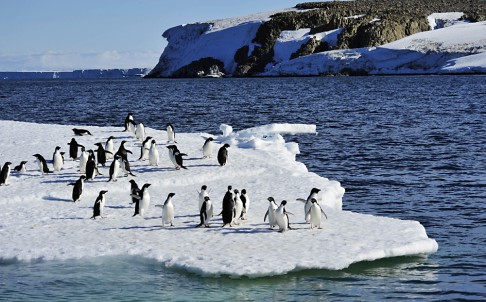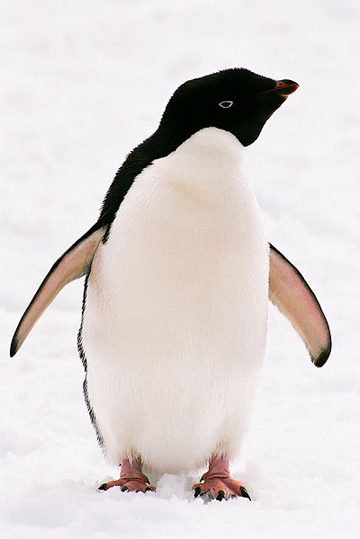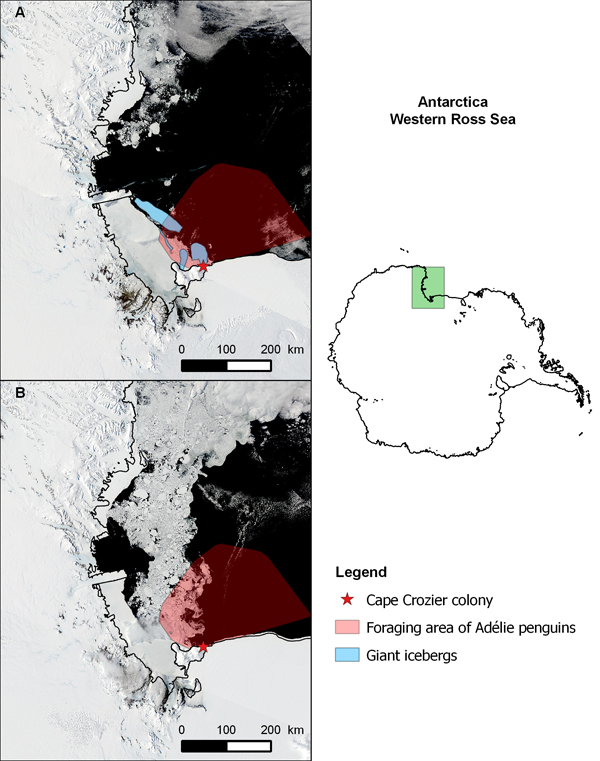Leptin found in mallard duck, peregrine falcon and zebra finch
Date:
March 24, 2014
Source:
University of Akron
Summary:
How
does the Arctic tern (a sea bird) fly more than 80,000 miles in its
roundtrip North Pole-to-South Pole migration? How does the Emperor
penguin incubate eggs for months during the Antarctic winter without
eating? These physiological gymnastics would usually be influenced by
leptin, the hormone that regulates body fat storage, metabolism and
appetite. However, leptin has gone missing in birds -- until now.

Male
mallard duck. University of Akron researchers discovered leptin in the
mallard duck, peregrine falcon and zebra finch, marking the first time
the hormone has been found in birds.
Credit: Image courtesy of University of Akron
How does the Arctic tern (a sea bird) fly more than 80,000 miles in its roundtrip North Pole-to-South Pole migration? How does the Emperor penguin incubate eggs for months during the Antarctic winter without eating? How does the Rufous hummingbird, which weighs less than a nickel, migrate from British Columbia to Mexico? These physiological gymnastics would usually be influenced by leptin, the hormone that regulates body fat storage, metabolism and appetite. However, leptin has gone missing in birds -- until now.
UA Professor of Biology R. Joel Duff made the initial discovery by comparing ancient fish and reptile leptins to predict the bird sequence. Duff, along with undergraduate students Cameron Schmidt and Donald Gasper, identified the sequence in multiple bird genomes and found that the genomic region where leptin was found is similar to that of other vertebrates. Jeremy Prokop, a former UA Integrated Bioscience doctoral student who initiated the project, then constructed computer models of the bird leptin's three-dimensional structure and performed bench experiments to show that the bird leptin can bind to a bird leptin receptor. Richard Londraville, research team member and UA professor of biology, says that the search for leptin in birds has been a bit of a race among scientists.
Crucial discovery "It has been a pretty big deal because people wanted to study leptin in birds for the poultry industry, for instance, to develop faster growing and tastier chicken," Londraville says, noting that, interestingly, leptin has yet to be discovered in chickens, perhaps because their gene structure varies from that of other birds.
Robert Dores, editor-in-chief of the journal General and Comparative Endocrinology, says the discovery represents a significant turning point in leptin study. "This study now sets the stage for future studies on the evolution of leptin function ... and reinforces that studies on hormone sequences should be complemented by hormone receptor modeling studies," says Dores, a University of Denver professor of biological sciences. "The world of comparative endocrinology has entered the 21st century."
Story Source:
The above story is based on materials provided by University of Akron. Note: Materials may be edited for content and length.
The above story is based on materials provided by University of Akron. Note: Materials may be edited for content and length.
Journal Reference:
- Jeremy W. Prokop, Cameron Schmidt, Donald Gasper, Robert J. Duff, Amy Milsted, Takeshi Ohkubo, Hope C. Ball, Matthew D. Shawkey, Herman L. Mays Jr, Larry A. Cogburn, Richard L. Londraville. Discovery of the Elusive Leptin in Birds: Identification of Several ‘Missing Links’ in the Evolution of Leptin and Its Receptor. PLoS ONE, March 2014; DOI: 10.1371/journal.pone.0092751
University
of Akron. "Missing hormone in birds: Leptin found in mallard duck,
peregrine falcon and zebra finch." ScienceDaily. ScienceDaily, 24 March
2014. <www.sciencedaily.com/releases/2014/03/140324184227.htm>.



















